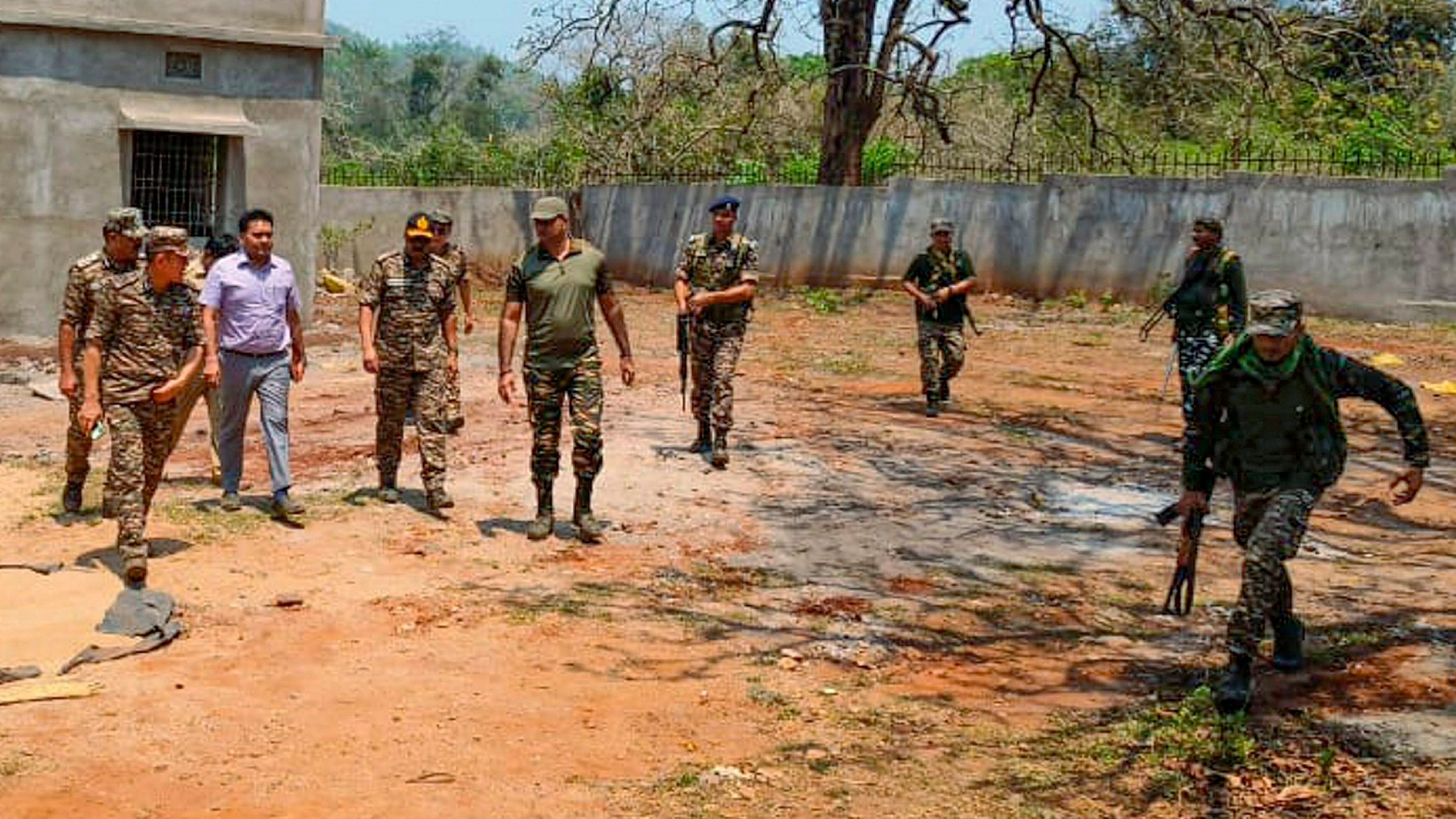
Security personnel during an operation at a Maoist-hit area, ahead of the Lok Sabha elections in Jharkhand, in West Singhbhum district. Representative image.
Credit: PTI Photo
Once considered the nation’s biggest internal security threat, an insurgency movement led by the Communist Party of India-Maoists (referred to as Maoists) is now showing signs of significant decline. Their insurgency capabilities and territorial dominance have markedly reduced, with Maoists now mostly confined to isolated pockets within Chhattisgarh (and some areas of Andhra Pradesh, Odisha, and Maharashtra). A joint operation conducted by the Border Security Force (BSF) and the District Reserve Guard (DRG), a specialised unit of the Chhattisgarh police, on April 16 resulted in the neutralisation of 29 Maoists. This operation dealt yet another severe blow to the outlawed organisation, particularly targeting
the North-Bastar Division Committee.
The significance of the April 16 encounter extends beyond its immediate impact. Taking place just three days prior to the general elections, it not only led to the elimination of one of the most wanted Maoist leaders, Divisional and Area Commander Shankar Rao, but also resulted in the deaths of 15 female cadres. The encounter sparked political discord. The newly elected chief minister of Chhattisgarh, Vishnu Deo, commended the security forces for their success, while the recently ousted chief minister, Bhupesh Baghel, expressed scepticism about the circumstances surrounding the encounter. Home Minister, Amit Shah, also commended the security forces and emphasised the government’s commitment to eliminating the Maoists.
Since the formation of the BJP government in Chhattisgarh, a total of 81 Maoists have been eliminated in 2024 (including the April encounter), compared to 23 Maoists in 2023. Additionally, security forces eliminated 14 Maoists in the Dantewada region in March 2024. Interestingly, the skirmishes between the security forces and the Maoists have marginally increased in 2024 compared to the previous year, despite the state government’s calls for dialogue and the recent call by the CM to bring the Maoists back into the mainstream.
In a landscape where official assertions emphasise the steady decline of the Maoist threat to internal security, violent confrontations resulting in the deaths of numerous Maoist cadres and the security forces prompt contrasting interpretations. The official narrative tends to favour a military approach aimed at eradicating the outlawed organisation, a response driven by the Maoist insurgency’s inherent nature and objectives. The Maoist insurgency, characterised by sustained violence aimed at overthrowing the parliamentary form of governance and establishing ‘New Democracy,’ poses a direct challenge to the State’s monopoly on the use of force. Thus, the Indian State’s inclination towards a military-centric approach to containing the Maoists aligns with its strategic imperatives. However, the continued reliance on military-dominated counter-insurgency responses against the backdrop of dwindling Maoist strength and control over the territories raises questions about its need and efficacy for the establishment of peace. Arguably, such violent confrontations and the substantial deployment of security forces in Chhattisgarh and other states with a Maoist presence undermine prospects for lasting peace.
In recent years, civil society organisations and academia have advocated for dialogue and negotiation between the Maoists and the government. Notably, the state government extended an invitation to the Maoists for unconditional talks in January. Considering the inherent challenges associated with face-to-face discussions, the government proposed virtual dialogue as an alternative, aiming to restore peace and stability in the state’s tribal regions. While a call for dialogue from a newly elected government raised hopes, especially among the marginalised
communities, it remained largely symbolic, as responses against the Maoists continued to be confrontational.
Establishing peace, characterised by the cessation of hostilities between Maoists and security forces, the gradual withdrawal of security force deployments from Maoist-held territories, and the safeguarding of constitutional rights for the marginalised, is an urgent imperative in insurgency-affected regions. For decades, the tribals and other marginalised communities have borne the brunt of the conflict between the State and the Maoists. While both the Maoists and the State share responsibility for ensuring the peace and security of the people they claim to be representing, the onus largely falls on the State.
As a gesture of commitment to peace, the State should consider the phased withdrawal of security forces, particularly in light of the declining insurgency capabilities and shrinking hold over territories of the Maoists. This would signal the State’s earnestness in engaging in meaningful dialogue. Similarly, the Maoists must renounce violence to facilitate constructive negotiations. The prevailing stance of each side, demanding concessions from the other, has hindered the peace process. While encounters may be seen as triumphs in the State’s fight against Maoists, they impede peace-building efforts.
(The writer is an associate professor at the School of Conflict and Security Studies, NIAS, Bengaluru)